
Corsair bundles in a five year warranty with this in addition to a "100,000 hr" MTBF rated at 50˚C. While MTBF ratings are grey numbers at the best of times, the 50˚C testing is certainly very good standard. Corsair backs this up by using 105˚C Japanese (nippon-chemicon / united chemicon) KMR capacitors instead of the usual 85˚C as well.
Opening the unit up, you can see the large Adda fan in the top, and the same airflow director piece of plastic that covers half the fan. While we understand the theory of why this is here—to push the airflow towards the back of the PSU's internals, whilst simultaneously creating low pressure suction underneath—in reality it majorly diminishes airflow by effectively cutting off half the fan's potential.
The heatsink inside, while large enough to dissipate the MOSFET’s heat, are not specifically angled to direct the air out the back. Corsair informed us that this is essentially a 650W in 550W clothing, so the insides shouldn't get overly hot as we expect there to be a decent amount of overhead available.
If you look at the insides of the TX750W and Thermaltake Toughpower Q-Fan 650W you can certainly see the similarities.
Taking out the main PCB we did come across this though – at first glance the very heavy and quite messy soldering appeared to us as evidence of a "golden sample", rather than a factory only job. Not only that, but the "single rail" design seemed to be actually four rails – with 12V 1-4 emanating from the PCB. Concerned, we contacted Corsair who explained that post manufacture the PSU undergoes further modification to regang the four rails back into one again (it goes 1-4-1), and this requires further soldering. Our part, like all other European review samples and channel sales in the UK, was sent from stock held in the Netherlands. Another VX550W was dispatched the same day for us to take apart to check the differences.
The extra solder shouldn't affect the performance (if anything, it'll guarantee the connection), and you'll never see it as it's between the PCB and casing.
While the 1-4-1 design is "crude" it certainly keeps it cheaper than working with CWT to design a completely new unit which costs money for R&D. It's also unsurprising that Corsair claims it over specifies its VX range – it does the same thing with the HX range that are manufactured by Seasonic.
Addendum 6th May 2008:
After receiving a factory sealed second unit from Corsair today we checked again to find the above result. Obviously the first sample we received was just poorly finished because this is far cleaner, yet the soldering is almost identical. We're now confident that neither sample is "golden", our results are accurate and representative of what you would buy.
Opening the unit up, you can see the large Adda fan in the top, and the same airflow director piece of plastic that covers half the fan. While we understand the theory of why this is here—to push the airflow towards the back of the PSU's internals, whilst simultaneously creating low pressure suction underneath—in reality it majorly diminishes airflow by effectively cutting off half the fan's potential.
The heatsink inside, while large enough to dissipate the MOSFET’s heat, are not specifically angled to direct the air out the back. Corsair informed us that this is essentially a 650W in 550W clothing, so the insides shouldn't get overly hot as we expect there to be a decent amount of overhead available.
If you look at the insides of the TX750W and Thermaltake Toughpower Q-Fan 650W you can certainly see the similarities.
Taking out the main PCB we did come across this though – at first glance the very heavy and quite messy soldering appeared to us as evidence of a "golden sample", rather than a factory only job. Not only that, but the "single rail" design seemed to be actually four rails – with 12V 1-4 emanating from the PCB. Concerned, we contacted Corsair who explained that post manufacture the PSU undergoes further modification to regang the four rails back into one again (it goes 1-4-1), and this requires further soldering. Our part, like all other European review samples and channel sales in the UK, was sent from stock held in the Netherlands. Another VX550W was dispatched the same day for us to take apart to check the differences.
The extra solder shouldn't affect the performance (if anything, it'll guarantee the connection), and you'll never see it as it's between the PCB and casing.
While the 1-4-1 design is "crude" it certainly keeps it cheaper than working with CWT to design a completely new unit which costs money for R&D. It's also unsurprising that Corsair claims it over specifies its VX range – it does the same thing with the HX range that are manufactured by Seasonic.
Addendum 6th May 2008:
After receiving a factory sealed second unit from Corsair today we checked again to find the above result. Obviously the first sample we received was just poorly finished because this is far cleaner, yet the soldering is almost identical. We're now confident that neither sample is "golden", our results are accurate and representative of what you would buy.

MSI MPG Velox 100R Chassis Review
October 14 2021 | 15:04

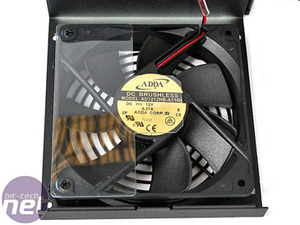
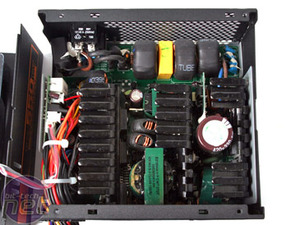
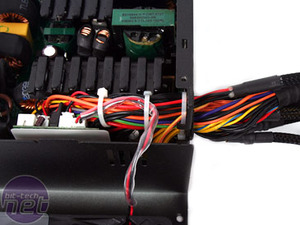
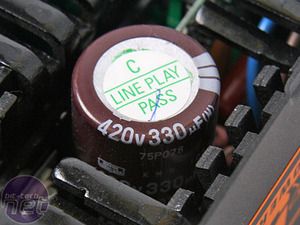
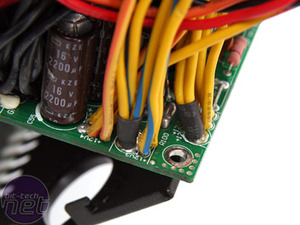
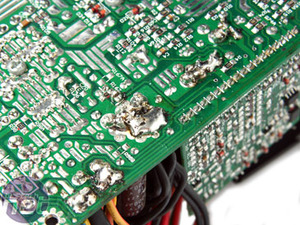
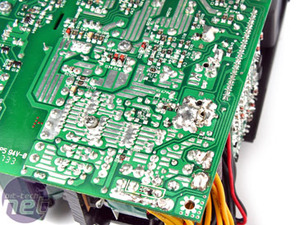







Want to comment? Please log in.